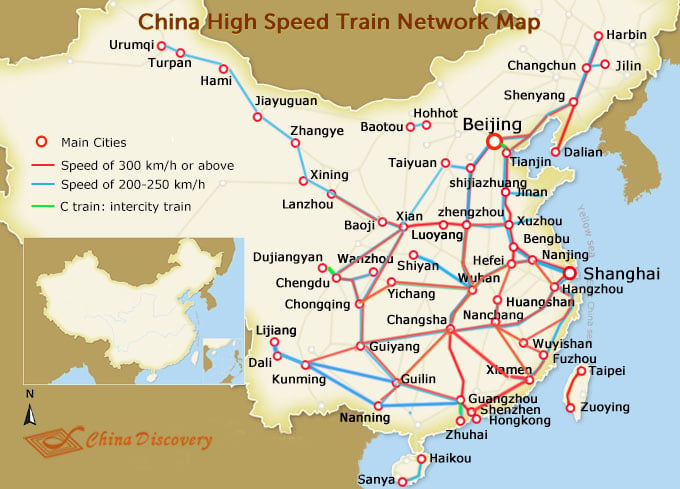Imagine apartments built into what used to be department stores, (Oh, you’re JC Penny 203? I’m at Sears 106). Get those old arcades up and running. Set up meal stations at the food court. Once people actually live there, stores will start to move back in.
If I’m unable to finish my life in my own home, that doesn’t sound like a terrible option.
Those are also the “mall rat” generations, so it’d be pretty fitting lol.
We can watch the original Fast and Furious, recreate a mockup of HTML eBay and put 5hp stickers on our mobility scooters with RGB under glow lighting, and sub’s around our nitrous bottles.
I live my life one quarter footprint store front at a time…
And, naturally, we’d be hauling boomboxes blasting gangsta rap in the baskets of our mobility scooters. lol.
Our generation’s old-folks home gonna be lit
I’m thinking this leads to MegaCity 1 type situations like in Dredd.
Have never seen it, but will take your word on it. lol
It’s worth watching
bc it will become our new reality. A bit of a… different take on the future than Star Trek shows, think more what led up to the Bell Riots rather than what happened afterwards.
mobility scooters with RGB under glow lighting
This but unironically. I think I need to find someone willing to let me do this to their scooter or wheelchair; I’ve got parts to spare and if it gets even a few chuckles it will be worth doing.
I think that’s the point.
Millennial here. Malls were seeing during my childhood and I’m almost Gen x.
Not even renovated, just set me up in a hot topic.
Can’t. The goth kids burned it down https://www.youtube.com/watch?v=8OvUDHpPgb4
Dibs on Spencers!
Have you been in a Spencer’s recently? Remember the skeezy area in the back? That’s now the whole thing.
Last time I was in one it was all Blacklights and shit that was cool when you were stoned lol.
Spensors was always an excuse to put a sex toy store in a shopping mall.
Spensors was always an excuse to put a sex toy store in a shopping mall.
As a GenX, I would prefer seeing them made into some sort of public space? We are losing a lot of that, at least where I live. Indoor space in particular.
Can you provide an example since in not fully understanding what you’re after?
A library.
Yeah but one for talking
A talkbrary
Barnes and Noble/Starbucks tried that. It’s pretty cool but didn’t scale
I commented below with a similar idea. Like a public indoor park, for when Outside™ is no longer an option for recreation due to climate issues. They are big enough to accommodate large playgrounds, both child and adult style, running tracks, swimming pools, sports fields/courts. Keep the food court, sure, throw in a library, etc.
If we ever get a house and senate progressive enough to shave like 0.000000001% of the military budget we could put one in every abandoned mall and have funds left over.
Yeah that sounds awesome!
I was just trying to say that once you privatize something like a mall to make it housing or whatever it is, you will never get it back. The city or some public trust should hold onto the property. What you actually do with it depends on what would be best for the community I guess?
Being a Canadian, just having some indoor places where you can gather in to get out of the cold in the dead of winter is something I don’t think we should give up.
3rd places.
counterargument; malls, arcades, and bookstores should come back in style because they were amazing and we don’t know what we missed until it’s gone.
Malls are sign of bad ciry planning
They will come back as the US shifts away from car centered culture, malls thrive in Europe
You have arcades in Europe?
Yes
How will shifting away from cars result in more people going to the mall? How are you supposed to get there?
Well optimally you have 2 legs, you could use those, also public transport.
Video with more info https://youtu.be/586SO9-wWoA?si=SL-vnIV14DPwFH9I
Well optimally you have 2 legs,
It’s called number eleven
It will just be delivered.
Well ofc, Europe doesn’t have delivery invented yet, that’s the difference between the us and europe
Some day.
I’m not clicking that link, you left your SI in it. Google is gonna track me if I click on that.
They track you in a million other ways, what do you care anyway.
Well, that kind of tracking data can be used to influence elections and other such deeds, as Cambridge Analytica showed us. I don’t want megacorps to have that much power over people.
deleted by creator
And yes, it can be done in the US as well, and not just in cities. I think our similar touchpoint in the US is “Main Street”. Guess what: they still exist in a few places.
Time to brag about my town. We have a town center with a Common, transit hub, library, post office, government buildings. Most importantly we have a nice walkable street with shops and restaurants. As was tradition, the lots are in back, but there are also higher density housing so many people are just there and all the buses, taxis, Ubers, bicycles, scooters, and even canoe rentals center on that area so there’s transit.
During COViD when we couldn’t go to places with a lot of people, this became much bigger. My family wasn’t the only one that developed a new tradition of walking at the Common and along the street, eating outside, or grabbing takeout from one of the many Ethnic restaurants to eat at a bench on the Common
By subway. By bus. By bike. Walking. The world by and large doesn’t revolve around cars. How do you think Europeans get there?
Public transport…and their countries are small as fuck. The amount of people who think the USA is the same size as European countries is hilarious. Most states are the size of a few eu countries.
Yeah, so? Are you going to a mall in the next state or what? Public transport connects suburbs and cities. You’re not supposed to take the subway from Chicago to your favorite mall in Seattle, just like no European takes a bus from Amsterdam to go shopping in Brussels.
Yes, that’s what Europeans don’t understand about America. When we go to, say, Wal Mart, there’s only one. We have to go to Bentonville, AR. Not so bad for us here in the Midwest, but the residents of Alaska have it particularly tough. And since you go to Wal Mart to pick up milk, we can’t go by public transport. It has to be by car, or better yet, drive the Canyonero. (No train schedule can predict when the milk runs out!)
The country is so big, and we have so much empty land, there’s just simply no room to build more stores near where people live. What kind of madness would that be?!
(No train schedule can predict when the milk runs out!)
How about YOU predicting when milk runs out? I’m not asking you to do five-year plan, but it’s easy to know when milk will run our.
The country is so big, and we have so much empty land
Russia is bigger and has more empty land. Despite Putin’s idiocy with invading other country.
Nope but the nearest mall to me is 2 hours drive. No one is building rails out into the smaller counties. The USA is massive. I’ve lived in Europe, its a lot smaller, and people still have cars. Not saying this couldn’t work for cities but people forget how spread out we are here in the usa.
Nope but the nearest mall to me is 2 hours drive.
Have you considered that this is because most of space in USA is allocated only for cars? Or that if this space wasn’t allocated to cars, then you wouldn’t need to traverse such disyance in first place?
but people forget how spread out we are here in the usa.
The solution: trains
Maybe I’m biased living in a “European” part of the US, but it can translate very well to our country. the problem is not that the place is large, but so many places are suburban or trying to keep that rural feel, yet you want massive warehouse stores for everyday shopping. Everything wants to be its own destination, so there is no real concentration of snything
But every town can have a center where common areas are common. Every town can have a center with whatever shops and restaurants. Every town of every size can have some things in a higher density area that’s walkable. In our mythology, we call it “Main Street, USA” and look back at it as a long gone ideal, but it’s still a useful concept, still around in some places, and can be re-created. In my towns case it did well focussing on restaurants, because you can’t ft a Costco or modern grocery there. But there’s also a library, small movie theater, town Common. All the buses run there, and you can find taxis, bicycles or scooters, a nice river walk,etc. it also has a concentration of apartments and condos, so there are always people around
The rest of the entire world is a teeny bit larger than the US, but they still manage to do public transport just fine, for the most part.
Besides Europe and Japan…no they really don’t.
The amount of people who think the USA is the same size as European countries is hilarious.
Well, Russia is a European country. Also Russia is largest country in the world.
Russia also has shit public transportation because of its size.
Nah, corruption.
If they come back, I hope they will be more accessible on foot, with a bike, or with efficient public transit. Because if they are still surrounded by deserts of parking lots, only filled with EVs instead of ICEs, they can continue to die.
If parts of it become residential like OP suggested, then it’ll be accessible by foot.
It’s already a problem if they are not in the city center, as it sucks out business from the center and creates more traffic.
In my country (and I think most of Europe) malls (especially those in more central areas) have underground parking, or limited above-ground parking. There is a really nice one which is connected to a big park in the back. So maybe you can replace the parking lots with apartment buildings, recreational spaces and transit infrastructure and maybe include some underground parking.
you have to go all the way down below the dirt to prep a site for residential units. With a toilet, shower, and sink per unit, the density of sewer and water plumbing is much higher than commercial. Fire codes also demand egress points (a.k.a. windows) for every bedroom - hard to do Inside a big box retail space.
Also the weight for housing is much higher than the structure is designed for with large open space retail. If the thing didn’t collapse, it would probably sink into the ground enough to cause problems.
Now, if one could find a way to replace the department store footprints with housing, and have the mall corridor administered by a municipal authority without some criminal venture capital thief, something like this could be a great way to create practical compact and walkable living spaces. We need stuff like this, but no one in real estate can act in good faith with long term sustainability. Quarterly return vampires are too deep into their suicide run to handle sustainable life goals, even if the doors fall off mid flight.
Is a mall on Black Friday ( in the mall heyday) really lighter than a residence of the same footprint? Or is the average weight over time more important than a dozen hours every once in a while?
The more open a floor plan appears, where there are not large support columns, the lower the weight bearing capacity will be in general.
With something like modern skyscrapers that appear to have open floor plans, there is a massive structure somewhere within the design. The structure is usually in the center built around the elevators and stairs, although there are other methods too. This structure is engineered for the specific loads of each floor and the total structure, along with various environmental factors such as weather. Like all structures, this starts with a foundation that is large enough for the designed load with a small margin of safety added. The cost of the foundation is directly related to the weight bearing capacity. No one is building structures with substantial extra unused capacity. Likewise, people like the aesthetics of open indoor spaces. This involves designing a structure with the minimal amount of load bearing capacity so that it does not need support columns throughout for the roof and upper floors. This particular aesthetic constraint means that the total load bearing capacity of department stores is very close to what you see in a typical store. If you start adding a bunch of walls and furniture to subdivide this space, there us absolutely no chance that the structure could handle the load. Even if you would like to add support columns, the foundation is engineered for the load. You can’t reinforce something like this in a cost effective way. The size and depth of the pad, rebar density and structure all must be substantially different. You’re likely to need piles or other features that tie in the structure to deeper bedrock elements of the underlying earth.
I guess I’m picturing a mall with lots of support beams in the stores themselves, but not many in the hallways. I wonder if my local mall growing up was originally built for a different purpose. I can’t really picture any other malls, but I’ll keep an eye out when I visit a different one.
Malls are usually multiple stories. Couldn’t you do all the plumbing on the first floor to avoid going underground. And then add structural reinforcement at the first floor to prevent higher floors from collapsing / sinking? Yeah for egress you’d have to put the bedrooms along the exterior walls. But I’m sure you could still get plenty of use over the space which does not border an exterior wall both as part of the unit and as part of some shared community area.
Watch when an old mall is demolished. Look at the structure and the way the heavy equipment is used. You’ll start to see the issue better. It is usually sketchy business to demolish because of the spans involved. It is more like a light bridge construction than it is a typical building. It can’t be demolished incrementally like taking out bites of the structure and working across. The ones I’ve seen drop the roof first and clean up what remains.
Only an engineer can really say one way or another, and every building will be different. However, I’m willing to bet the load bearing structure is specialized and unique to the application. I doubt there is any flexibility for repurposing more than 10-15% outside of the tolerance you see utilized. It is like the question why can’t a Honda Civic perform like a Bugatti. Technically anything is possible if you point your money machine gun at it in a currency downpour, but is it still a Civic when a Bugatti is cheaper?
The smarter option is likely to demolish the light structure of the department store and build a proper apartment building that is then attached back onto the mall corridor.
How do earth-sheltered homes comply? I’ve seen a few, and they have no windows in most of the rooms, including bedrooms. And there’s a few who’ve taken to living in caves, old mines, and decommissioned missile silos. There must be an exception to this code.
Forget that, how to tower blocks comply? There isn’t a single exterior fire escape on any of the multi-story apartment buildings anywhere in my entire county, and some of those fuckers are 7 or 8 stories tall. Your choices in the event of fire are an interior stairwell, or splat.
In modern (post 70’s) buildings, the interior stairwell is the emergency fire exit. New York (and some other old cities in the US) buildings are stereotypically plastered with external emergency fire stairs because they are so old and their internal stairs aren’t fit (are actually a fire hazard) for emergency exit. The exterior fire escape is the exception to the building code, not the rule. They’re there to compensate for the fact the buildings predate most of our modern understanding of fire and other accidents management. Modern multi-story apartments are way more resilient to fire hazards than a 1920’s building, even when they are taller.
On the event of a fire you are supposed to leave your apartment and run down stairs, for which it should be: equipped with emergency lights, properly signalized to indicate exits, and use only doors with push bars towards the exterior. A well built building will have all rooms with a direct line of sight towards the apartment exit, fire alarms on every floor, extinguishers in all common areas (ideally every apartment should have one inside for the tenants), a fire hydrant or fire fighting water point in front of the building and a clearly signalized safe spot outside (distance away from the building so the risk of getting hit by something falling from the building during an earthquake is lower). The building should have fire retardant protection between each floor and between the common areas and the apartments.
This is not from any particular code, I’m no expert on any of that, just what I was taught from a firefighting volunteer friend, it is really good information to assess the safety of a building as a potential renter.
It’d be kind of neat to build adjoining residential structures onto an existing mall such that the mall would be a common indoor area. Suppose the HOA dues would be murder, though. 😆
Bet you’re real fun on renovation shows…
…I want someone like them working on every single renovation
As a millennial I can tell you that most millennials I know wouldn’t want this but instead make it a place for none corporation and community events and such. A public place where your not forced to buy things where can just exist with others even if you have zero money and accessible to all genders and disabilities and races.
And yes retrofit part of it for people who need to get back on there feet, and homeless people.
If we could retrofit them into homeless shelters we could but it would require rebuilding mostly everything as malls are designed for stores not housing people (for instance the bathrooms are not private and not easily accessible if you live somewhere in it)
I know it’s hard to imagine since you’ve pretty much got to pay to exist anywhere today, but malls were a place to just exist. I spent hours and hours wandering around the mall in the eighties without any money.
Expanding on the thought, it was perfectly ok to be, get this, a TEENAGER existing without any money in a mall!
In my country malls were never this. When I was young several malls, specially high end ones, banned unaccompanied teenagers during weekdays and at certain hours. Also, fuck malls with absolutely no seating or resting spaces outside of the food court. I hope they all go broke and get demolished.
Might also depend on the timing. At least in the 90s, my area was as described, a hangout place where ambient hanging out was considered just fine because enough people bought stuff it was worth it and people behaved relatively well, or they had enough security to make that the case.
Now there’s all sorts of signs up about unaccompanied teenagers are not allowed.
Also, fuck malls with absolutely no seating or resting spaces outside of the food court.
Sounds like EU got work to do
I have no respect for people with no shopping agenda
malls were a place to just exist
Not really. Malls existed because enough of the people who went there were spending enough money to make them profitable.
Yes it was permissible to go to a mall and not spend any money, and a lot of people did just that, but that doesn’t mean malls did not require most people to be spending money.
I think not “most” but the ones that did spend spent plenty enough to make up for the rest. Maybe “most” do at least grab food at a restauraunt though.
Yesss, give us community spaces that are not designed around maximizing profits.
In a city in my country there was an old mall that was slowly taken over by bands who used the spaces as rehearsal rooms. It gained a huge following including some local big bands and concerts. They all paid rent too. Unfortunately, early this year, they were evicted by the owner and City Hall, out of nowhere and are on its way to become airbnb’s for tourists…
Nothing new…
Elsewhere, someone suggested that it would be necessary to take the rebuild down to the dirt to handle plumbing and the like for individual units, but I’m not sure I agree.
Generally there is significant excess ceiling height in these commercial spaces, no reason the floor couldn’t be raised throughout the space to accommodate plumbing and the like in a way that’s easily accessible for future maintenance. You still end up with 8’ ceilings (or probably rather more) throughout.
Over the years, I’ve watched a number of retail chains and malls die, sometimes suddenly and sometimes slowly. It’s continuously seemed like a huge waste to me, when conversion to residential space would be relatively easy, relatively affordable, could be funded by local gov or nonprofit, and would make a significant difference in net housing costs in a given area.
When ‘traditional’ residential developers are competing with that, and with the ability to slap down standard-sized (AKA easy) risers/walls/etc. within commercial spaces of defined sizes, a further reduction in local housing costs is likely.
Adding a load bearing floor sounds pricey. I’d go for industrial and have the pipes exposed.
Load bearing as in, structural? Isn’t that the existing floor? Something built over the top wouldn’t be load-bearing unless you’re talking about any walls that would go up as well. It certainly wouldn’t be holding up the ceiling or anything higher.
Ahh, good point. Meant more it can handle furniture, people, etc. Doesn’t that mean the walls are fixed though?
If you’ve got an open area like a department store, that’s a lot of square footage that can be divided out. Walls can be built too, not uncommon at all in commercial construction I’m sure. And there are raised floor setups in data centers to make it easy to run cabling and stuff. If they can handle giant server racks, I’m sure a couch would be easy peasy.
This isn’t a too shabby of an idea. It probably won’t be used but a mix of stores and homes in one building sounds great.
The idea of apartments centered around a grocery plaza has been a thing for a while. It’s almost an answer, except it still requires transportation to everything else. Plus the stores tend to be higher prices to support the cost of property and because they can.
apartments centered around a grocery plaza has been a thing for a while
Do you mean like… a town?
A town is a bit more than that, but it is how towns typically began, from a central trading place and nearby settlements. Only this is a planned concrete parking lot and established chain along with fully built domiciles, already in a city/town’s jurisdiction.
Only this is a planned concrete parking lot
That’s where it all falls down. Mandatory parking space kills cities. The point of a centralized commercial area with residential around is that people will walk to it.
Add a metro station, a large parking garage, should work
That would be a cool place to live to me.
ITT: people want cyberpunk megabuildings
Stahp, I’m not even 40 yet.

And you won’t be able to retire in 20 years, or 30, maybe 40, if you’re lucky
mall walks!
With those moving walkways you see in airports.
But keep the appearance of a mall.
That way when we all have Alzheimer’s from micro plastics, we can wander around it and feel youngIn some places they’re already doing it to revitalize the majority of the mall, convert a section and suddenly you’ve got people around 24/7 that want services.
Yeah, they’re trying that around here and failing spectacularly. The recent fascination for new construction in my area seems to be try this “Main Street, USA” shit where they build brutalist flat-roof apartment blocks but with the ground level being retail stores. The rationale seems to be to attempt to build some kind of enclave where people can live, work, and shop without ever having to leave. The only glaring caveats are that the only retail businesses that ever appear here are all shitty franchised fast-casual restaurants where nobody wants to go, with the gaps filled in by the usual parade of payday loan places, cash for gold, crossfit joints that attract no members, and a revolving door of nail salons and wannabe hipster barber shops opening and going out of business.
Notably, none of the retail joints at street level pay enough for anyone working there to afford the astronomical rent for one of the apartments in the same fucking building. These motherfuckers can’t even set up a company town correctly…
I’m talking about taking an existing mall and converting part of it, not new constructions
I know that, but for all the reasons being discussed in detail elsewhere in this thread nobody is actually doing that. What is happening in reality is what I described, and it’s bonkers.
The only malls or retail or industrial buildings I have ever actually seen “revitalized” into housing was done by tearing them down entirely and building new buildings on the land. Around me, at least, what’s being built is what I described in my previous comment.
I’ve seen both. Our area has had, for a few years, mixed use zoning as a requirement. So a bunch of projects that clearly only wanted to do housing are doing what you describe: Housing and a meets minimum commercial/office effort. Notably while trumpeting “walkable” which is really code for “we don’t waste land on unprofitable parking lots”. So you have somewhat dense living and retail where the retail has zero parking, so the only people a business could hope to get are the people in the units immediately close by, which are not a lot, since each project seems to go for low rise housing. So you get three stories of apartments which is more dense than suburbia, but not nearly dense enough to sustain a dedicated retail presence.
But there is this mall they’ve effectively renovated into a “downtown”, adding high rise apartments, and lots of them to the massive retail presence as well as big office buildings. Critically, also expanded to an insane degree the amount of available parking. It was a pretty failing mall (like most) and now it’s doing really well, both with high occupancy for their apartments and people going there for the rather nice retail. I think this was the first project and inspired the county to decide everything will be a success if it’s just mixed use, and they haven’t really come around to realize that they haven’t succeeded in forcing the developers to do viable mixed use by the current weak regulations.
As a millenial, all I want is the LAN party old folks home.
Knock these things down and plant trees and stuff.
While we’re at it knock all the corporate 9to5 office work buildings where all the employees can work from home and plant trees and stuff there too.
Trees and ponds and natural parks and shit, hiking trails…etc.
As other people have mentioned, this can be a hard problem.
However, malls are typically surrounded by massive amounts of space used for parking. There is a plan for the largest mall in my region to convert all of that land into residential spaces, 2000 apartments. The parking will be moving underground.
Seems like a decent idea to me.
Would be even better if instead of 2000 apartments, it was something like 1100 condos, then the rest split between offices, shops (including groceries), parks, and some sort of community recreation center. Do the same with the surrounding area, changing up the specialties of the locations a bit so that it’s worth it to leave your mall-sized area and visit others.
Then set up a mass transit system that goes between them, including consideration for people wanting to move large purchases like furniture and appliances, like one of the cars on the train has large doors, collapsible seats, and hardware for securing things too big for one person to safely hold. Or set up a parallel delivery system for things while the people ride the delivery system for people.
Then you don’t need the underground to go to parking and can increase the density of the area or put more space towards parks and recreation.
Welcome to many parts of Europe, you are invited to come visit any time :)
Yeah the malls themselves are hard to convert. Ditto for those unused office buildings downtown. Takes a lot of work to change commercial space into residential.
Easier to start from scratch, honestly. Those empty parking lots make it simple to put up medium density housing, and then put commercial spaces back into the mall. Aka the Reston Town Center model.
That would be really good, but this idea has been explored and unfortunately it is only viable on a very narrow amount of buildings. Most malls aren’t properly built to be housing and the costs of adapting them for housing exceed the cost of just building new housing elsewhere. And the costs of tearing it down and rebuilding are even greater. Overall, Malls are economic net negatives for communities, all single use infrastructure constructions are.
This is the answer.
A cheap / half assed conversion would be a ghetto. It would be awful.
Sanitation would be a huge problem also. In an apartment you have access to air from the outside. Imagine everyone living in a box in the same enclosed space. Yes I understand malls have gargantuan (and expensive) air conditioning systems. It would still stink.
Not to mention the money. Even a derelict mall is still worth many millions of dollars. You have to buy or lease the building from them.
You’d be much better off creating a walkable community of low-cost housing in a low-density semi-rural area.





















